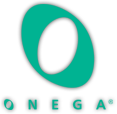Internet Standards are evolving all the time, but the fundamental addressing mechanism that allows one computer to talk to another on the Internet has been in place since 1981. Called IPV4, it allows for 4 billion network notes on the Internet which seems a lot and, back when initially only tens and then hundreds of computers were connected to the Internet, would have seemed a huge number at the time in the same way that Bill Gates was once quoted as saying that '640K was more memory than anyone would ever need'. Over time these have all been used up and allocated such that there are, in the great scheme of things, very few left. If you've come across addresses like 192.168.X.X on your network computers or 89.106.X.X for other machines etc. then these are the IPV4 addresses.
The next generation of Internet is being built on IPV6 and this will allow for a world where everything from your socks to kettle are likely to have an IP address. It will not be long before it, by necessity, becomes mainstream and in use daily. Google, Facebook and other big websites are already IPV6 enabled and everyone else is gearing up. If you have a Windows 7, Windows 8 or Windows 10 PC or laptop and/ or Windows Server 2008 or 2012 then you are most likely already using IPV6 without realising it (if you like to tinker and want to see this in action try disabling IPV6 on a Windows Server and see what happens - actually on second thoughts don't, as things stop working without IPV6 enabled internally on your network).
Onega's core service network is no supporting IPV6, and we have a new allocation of IP Addresses from RIPE (the European coordinator of IP addresses) as Onega are a Local Internet Registry. For IPV4 we have an allocation of a /21 network which gives us 2,046= hosts / networks (and we have to be careful to conserve these). Our new IPV6 allocation is: 2a04:cf00::/29 - this does not look much but actually represents a significant increase.
In numbers, this is 633,825,300,114,114,700,748,351,602,688 addresses.
In Words this is: six hundred thirty-three octillion, eight hundred twenty-five septillion, three hundred sextillion, one hundred fourteen quintillion, one hundred fourteen quadrillion, seven hundred trillion, seven hundred forty-eight billion, three hundred fifty-one million, six hundred two thousand, six hundred eighty-eight.
Yes, that's a big number and we're still getting our heads around it!
Usefully, the RIPE website has a button to 'apply for more IPV6 address ' but we suspect that this will not be called for very often. Maybe in 2050 there might be another iteration needed but right now it is hard to think of how all these addresses can be used up; even if you really do have lot of socks.
More seriously though, here at Onega we are aware that change is coming and consider this on behalf of our clients. Any new equipment we buy is considered for IPV6 compatibility, and you should avoid anything that is not IPV6 compatible as this would thus be pre-obsolete.
IPV6 as a topic is something that is currently coming up to the boil, and when it gets there it will be a very big thing. We predict it will be a salesman's dream to replace anything that is not compatible with new models that are when the time comes. By thinking about this early you can ensure a smooth transition for your networks.
Interestingly geopolitics or geotechnocratics comes into play here. Historically America had (and still has) the biggest allocation of IPV addresses whereas countries like China had a virtually nil (or very much smaller) allocation, befitting their IP addressing needs at the time (China in the early 1980's was not big on the Internet). Thus countries like China are actually way ahead of the USA now on IPV6 adoption, through the simple necessity of pressure their IP V4 allocations caused - so we see vendors like Huawei (if you've never heard of them they are a hard competitor to Cisco and have over 100,000 members of staff making all sorts of computer and communications equipment and selling all over the world including to BT) competing hard with Cisco and ahead on IPV6 support where some American companies feel like they are dragging their heels somewhat and still selling yesterday's solutions. That will change soon enough though.
This article has been written mainly for interest and a little education perhaps, and also to demonstrate that here at Onega a big part of our work is looking forward, anticipating needs of the future as much as those immediate ones of today so that we are ready to help architect transitions to the core topology that will see them through the next decades.
If you have any questions or comments on this or other issues, please don't hesitate to get in touch - we like talking tech and this is certainly something you want to 'have a strategy' on. http://www.onega.net/contact .

